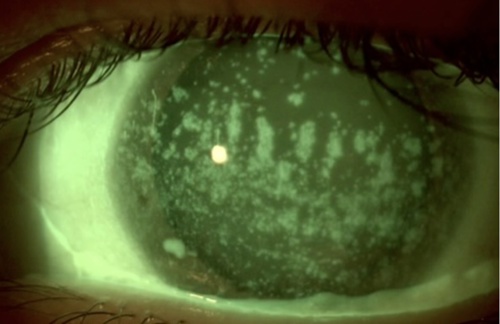
As roughly 20 million people in the United States have dry eye disease (DED), optometrists must be prepared to identify and treat it effectively. This was the education provided during the lecture, “Optimizing Your Dry Eye Practice,” which occurred yesterday at 8 a.m. and was delivered by Paul Karpecki, OD, FAAO, Mahnia Madan, OD, FAAO, and Mark Eltis, OD, FAAO, Dipl. ABO.
“There’s no one size fits all solution to dry eye disease,” Dr. Eltis said of the lecture. “An individualized and holistic approach incorporating the latest science, technology, and expertise is key.”
Identifying DED
Emphasizing the importance of the red flags associated with a DED diagnosis, patient history of medication use, ocular surgery, mechanical lid abnormalities, and prolonged digital screen use were first discussed.
Next, the available tools used to confirm DED suspicion were highlighted during the lecture. These tools: slit lamp microscope, the “look, lift, and pull” protocol, evaluation of blink dynamics, a validated DED questionnaire, meibography, and anterior segment imaging.
Treating DED
The discussion on treatment covered the benefits of the most recent interventions. These interventions: topical and oral drugs, in-office treatments (e.g., probing, intense pulsed light, low level light treatment, radio frequency therapy, and thermal pulsation), blood biologics, amniotic membranes, platelet-rich plasma eye drops, autologous serum eye drops, and scleral lenses.
Additionally, the lecture included a discussion on how to determine the treatment plan, along with specific patient cases designed to highlight how to approach different cases. OM
Advice for Academy attendees
“I always love networking at the trade show. I find that's the best place to bump into most of the people you want to see all at once," noted Dr. Ellis. "You can also find out about what lecture your colleagues are planning to attend and, equally important, what social events are the most anticipated."



